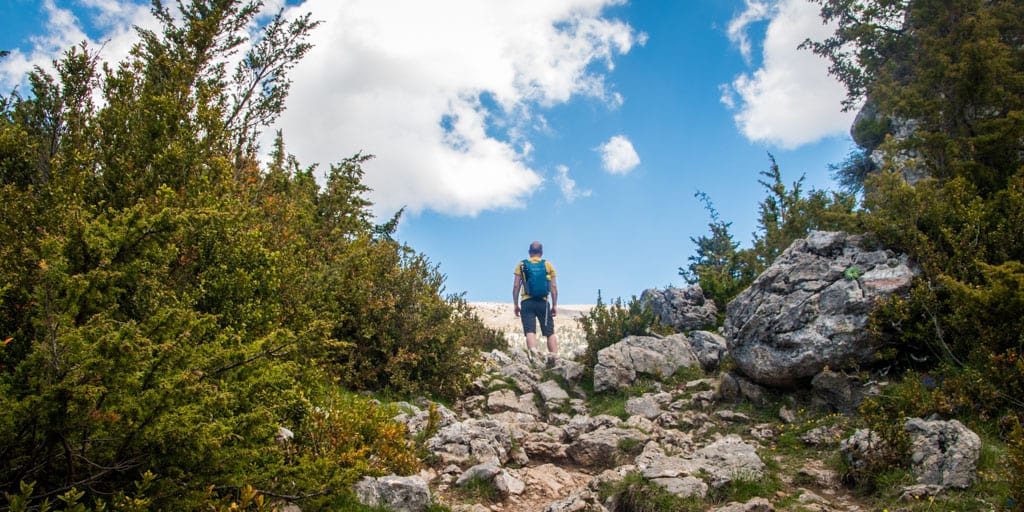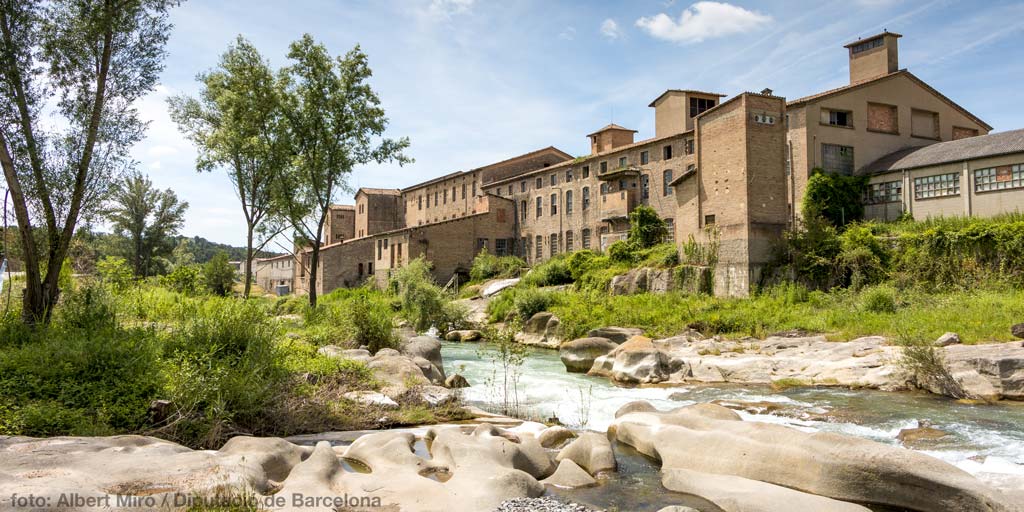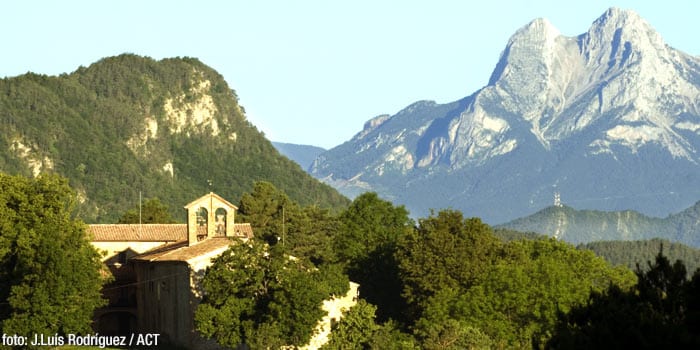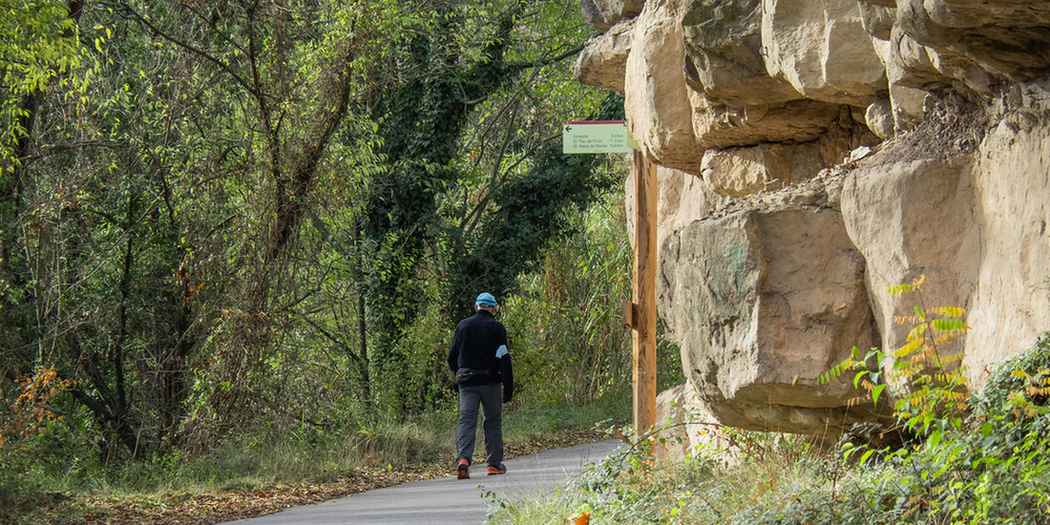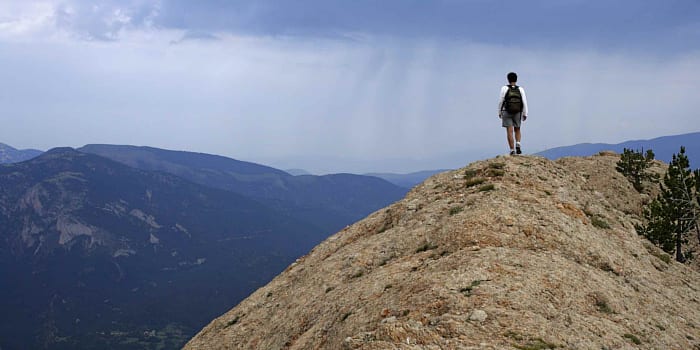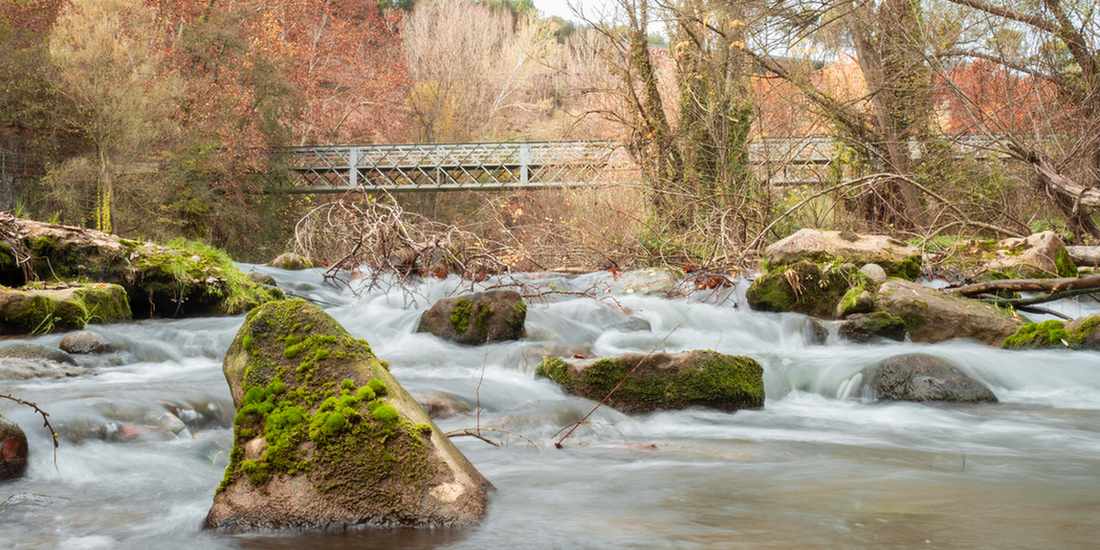
A section of the Llobregat Textile Workers’ Estate Route
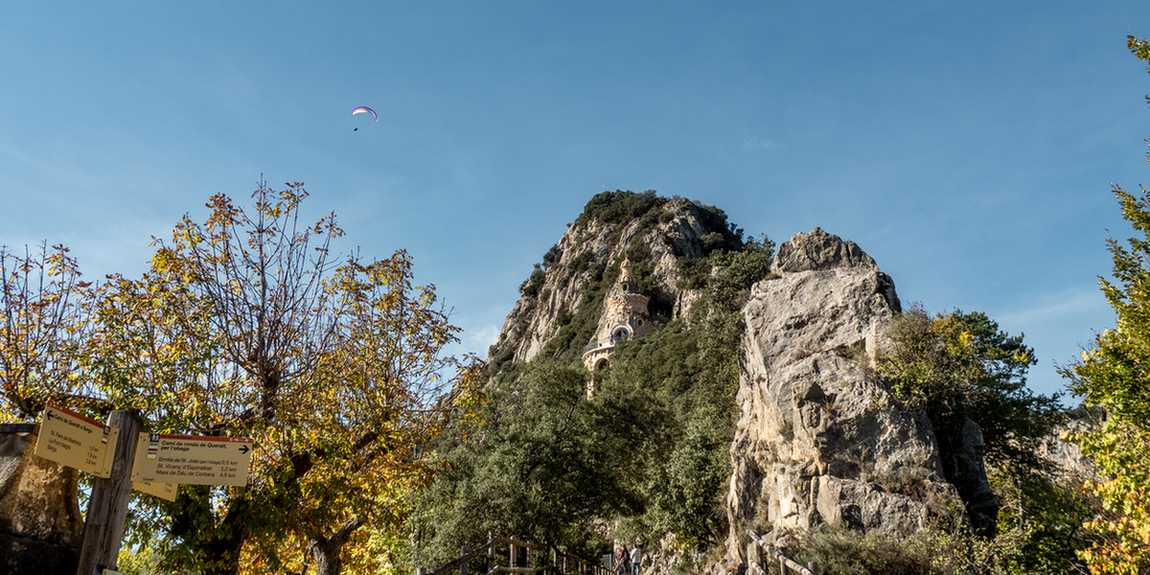
A section of the Way of Good Men
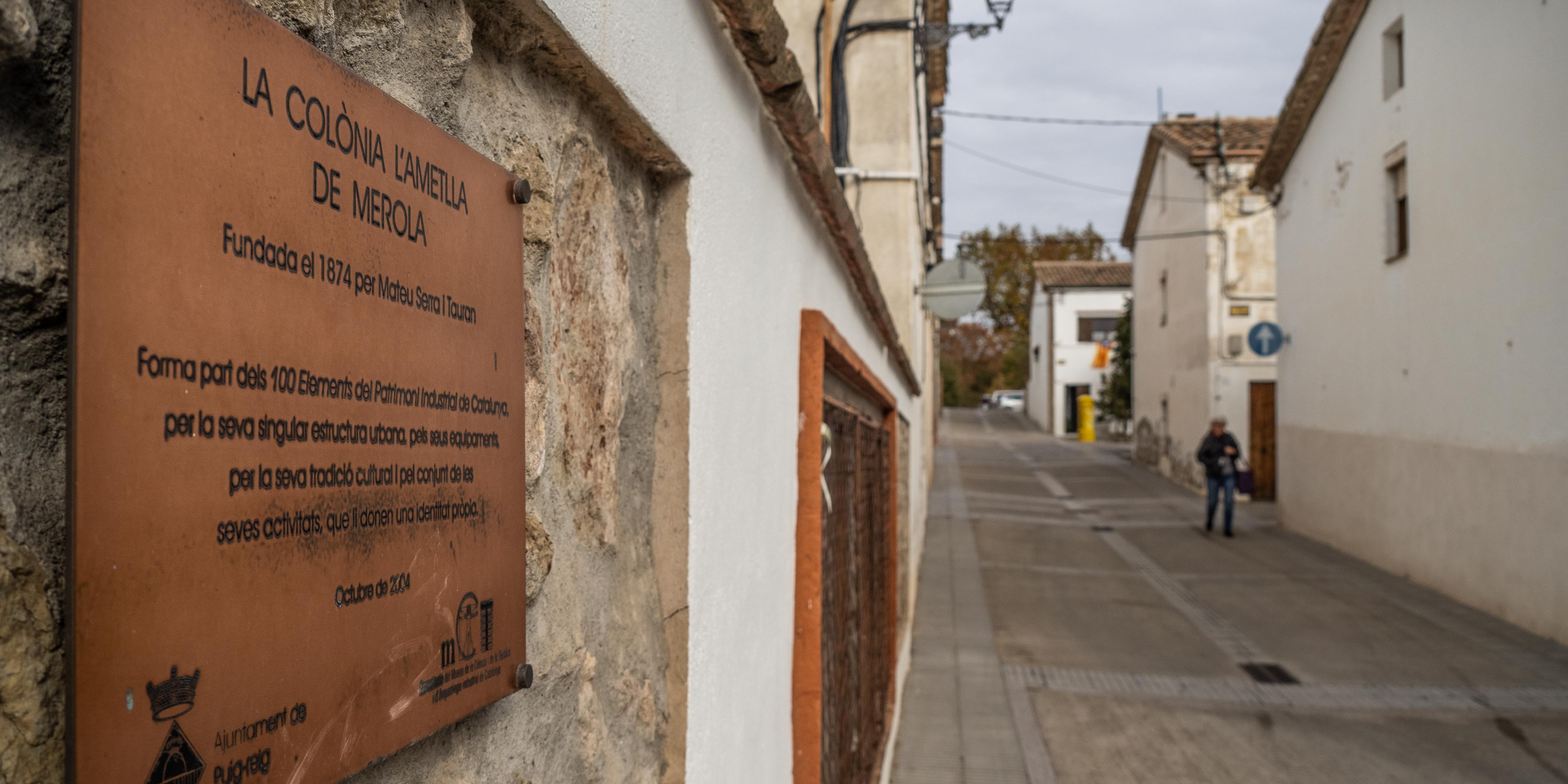
A sign in L’Ametlla de Merola on the Llobregat Textile Workers’ Estate Route
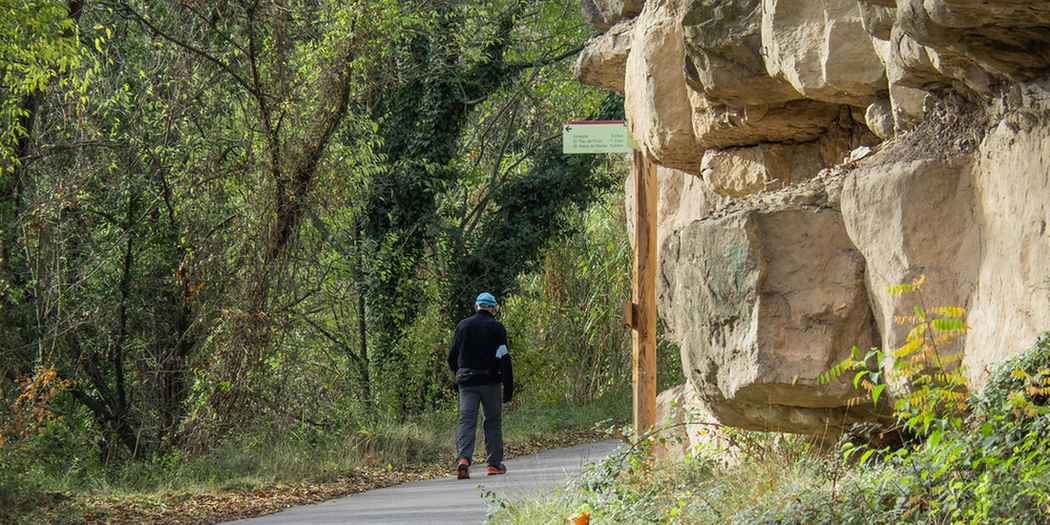
Route from Puig-reig to Ginebret
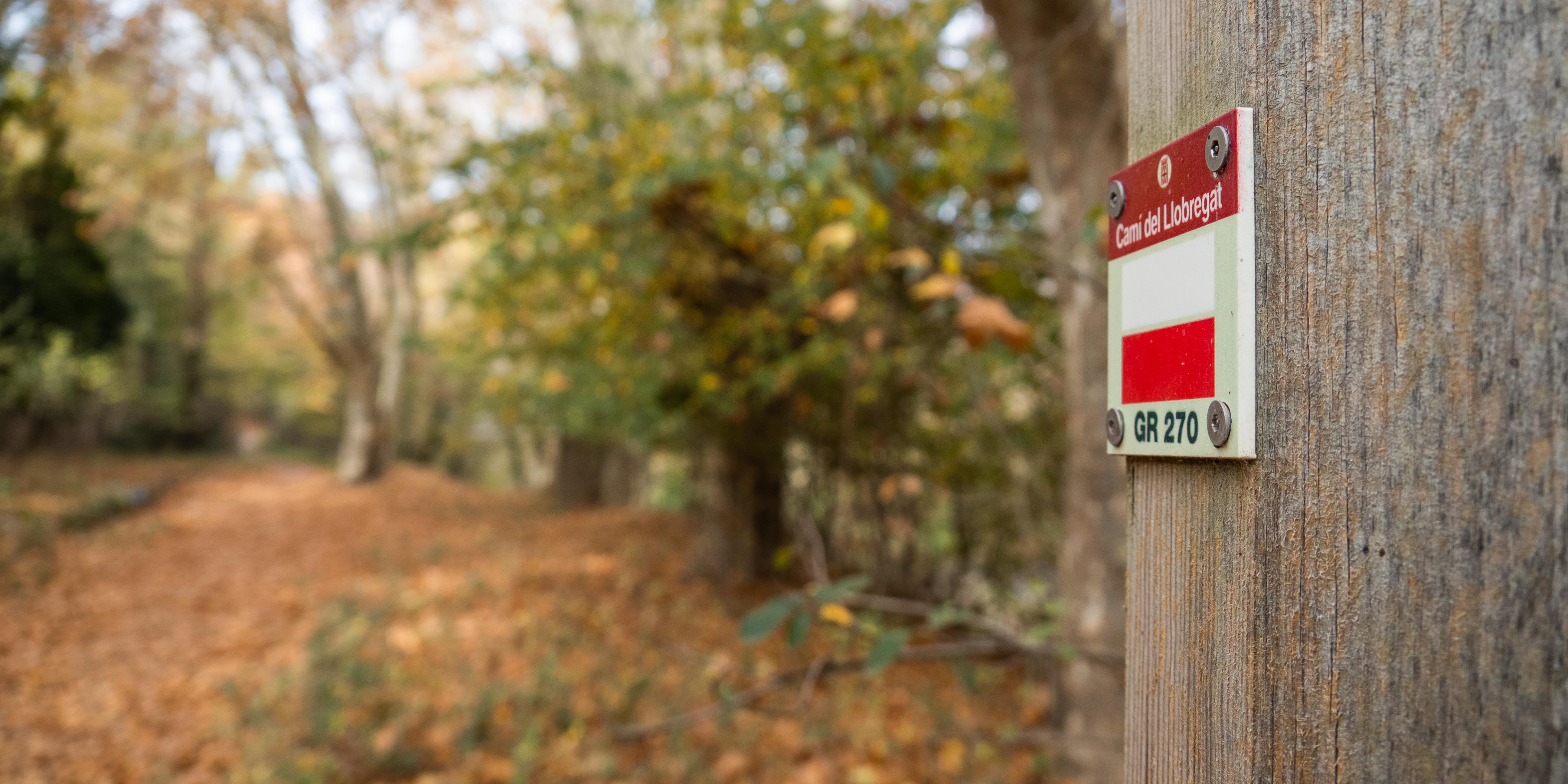
A marker signposting a route across the Berguedà region
Trekking through the Berguedà region
Would you like to spend a few days in true harmony with nature? Do you enjoy walking and do not settle for less? Today we suggest five trails to explore the most authentic Berguedà region, some of which require an overnight stay in a refuge, two days of walking or, at least, a full day of activities. Are you ready for adventure?
1. The Way of Good Men
In 1244, after three centuries of persecution, the last stronghold of the Cathars – men and women of strict morals who rejected all wealth and did not believe in the Catholic Church or the feudal system – was destroyed. This marked the beginning of an exile from the Ariege to the Berguedà region, where the Catalan nobles took in some of these fugitives.
This is how the Camí dels Bons Homes (Way of Good Men) came into being, inspired by that exodus, which connects the Fortress of Montsegur, where the Cathars were finally defeated, with the Sanctuary of Queralt. The tour covers 220 kilometres and almost 10,000 metres of elevation gain and is marked with the characteristic red and white signs of the GR-107.
It can be done on foot, which will take about 10 days, by bicycle or even on horseback, while recalling the means of transportation many of those men must have used to go into exile. Thus, during the tour, apart from enjoying breathtaking landscapes, you can recall the medieval world on both sides of the Pyrenees and remember the relevance of values, such as peace, respect and justice.
The section of the trail that runs through the Berguedà region goes from the Sanctuary of Queralt to Bagà, from where it enters the lands of the Cerdanya region. Along the way, you can enjoy the lush forests of the Serra d’Ensija, fall in love with the peacefulness of the alpine meadows of Rasos de Peguera and, above all, enjoy a 360-degree panoramic view of Catalonia's most iconic mountain, Pedraforca, which you will never lose sight of as you skirt around Gósol and Coll de Bauma.
2. Tour of the Llobregat Textile Colonies
During the second half of the 19th century, Catalonia underwent an intense industrialisation process, in which textile colonies played a key role. If you want to explore these industrial settlements, you have to go to the Llobregat, often referred to as “the working river”. In the Berguedà region, within the first section of this river, there are no less than 14 of these settlements, which, together with the Cal Mestre factory, make up a unique heritage that brings to life one of the most relevant chapters in the recent history of our region.
If you want to learn about the fascinating world of textile colonies, you can visit the Vidal Colony Museum, the Torre de l'Amo in Viladomiu Nou, the Cal Pons Colony Church, the Teixidor Bassacs House or the Ametlla de Merola Cultural Tour. An even more comprehensive option is the Llobregat Textile Colonies Tour, which is 32 km long in total and can be done on foot or by bike, starting at Pont de Pedret and ending in Balsareny, bordering the Llobregat River and following the white and yellow markings of the PR-C144.
Along this trail, which you can complete in a single day, if you start early enough, you will experience firsthand the transition from a pre-Pyrenean landscape, where the river is still frozen and blue, to an increasingly industrialised landscape, where human activity has altered the natural layout of the environment over the years. You can also stop at each of the settlements, see the differences between them and compare their state of conservation. Take a good look at the different parts that make them up! The factory, the houses, the shops, the lord's tower ... All of them form a small town that just had it all.
Finally, along the way you will also find an array of surprises that go beyond the settlements. Sant Vicenç d’Obiols, between Cal Rosal and La Plana, is a Romanesque gem that you cannot miss. Do not miss as well the Cal Lluent viewpoint, a gorgeous vantage point offering impressive views of Montserrat on clear days. Finally, the Riera de Merlès is a natural gem that will undoubtedly amaze you on the last stretch of the trail.
3. Catllaràs Tour
Between the LiIlet Valley, the Arija River and the Mergançol Stream, forming the border between the Berguedà and Ripollès regions, lies an often-overlooked mountain range, where you can enjoy its virtually unspoiled natural beauty. This is a privileged and unique natural area in the heart of the Barcelona pre-Pyrenees, where you will have the opportunity to marvel at a wide variety of wildlife (deer, birds of prey, foxes, squirrels, etc.) and, with a little luck, you may see the legendary edelweiss flower, which is found only here and in the High Pyrenees in Catalonia.
The tour we suggest takes two days and starts in La Pobla de Lillet. From this charming spot, you will climb up through rugged and little-known terrain, while walking along beautiful, secluded mountain trails that will take you to Sant Romà de la Clusa, where you will find the picturesque Clusa shelter, where you can spend the night. This first day is 11 kilometres long with an elevation gain of 850 metres. On the second day, after waking up in such an exceptional place, you will return to the starting point along a 17-kilometre route with a 450-metre elevation gain.
We recommend doing this route with a qualified mountain guide with extensive experience in the pre-Pyrenees, such as those offered by Rutes Pirineus, as they will not only guide you safely along the trails, but will also be able to tell you a great deal about the Catllaràs Natural Area of Interest, the flora and fauna of the pre-Pyrenees, the Xalet del Catllaràs (a building designed by Antonio Gaudí), life in mountain shelters and any other question you may have about the Pyrenees.
For all the above, this activity is perfect for a weekend, provided you have some prior mountain hiking experience.
4. From Puig-reig to Ginebret
In the Baix Berguedà area, around the small village of Ginebret, we find one of the few wooded areas in the region that was not destroyed by the devastating fires of 1944. This is a perfect route for discovering the surviving forests, which are made up of leafy pine groves on the shady side, which contrast with the more Mediterranean vegetation on the southern slopes and the riverside vegetation near the Merlès stream and the Llobregat River.
The route starts in the village of Puig-reig and is 22 kilometres long with an elevation gain of around 700 metres. To find the trail, follow the red and white markings of the GR 270, 176 and 4 trails, as well as the yellow markings of the Berguedà Trail Network, depending on the section.
Along the way, you will see the Colònia Pons, across the Llobregat River; the Riera de Merlès, which you will cross over the Pont de les Canals; and the Our Lady of Ginebret chapel, which crowns the hill where the village with the same name is located. This is a small Romanesque chapel from the 11th or 12th century, which rises above the Baix Berguedà plains and the north of the Bages region, which provides it with extraordinary almost 360° views. From this privileged vantage point, you will enjoy remarkable views of the central depression and the Alt Berguedà mountains.
On the way back to the starting point, you will first pass by Cal Pallot, a 16th-century farmhouse where you will also find the Romanesque chapel of Sant Andreu de Cal Pallot. Further on, you will reach Periques, another medieval enclave of utmost importance to the Knights Templar, who at the end of the 13th century were lords of the castle and municipality of Puig-reig, where they started to build a farm-convent, the Sant Julià farmstead. Finally, you will cross the Llobregat River again, this time via the Pont de Periques, and head back to the starting and finishing points of this great hiking circuit.
5. From Saldes to Gresolet
In the north of the Berguedà region, between Saldes and Gósol, rises the most popular mountain in Catalonia, Pedraforca, whereas the impressive Gresolet Valley unfolds in all its splendour on the shady side, with large walls, rivers, fir forests and several buildings that imbue this small corner with immense scenic and heritage value.
This 12.5-kilometre tour with a 750-metre elevation gain, starts at the Pedraforca Square in Saldes and heads into the Gresolet region, while revealing all its secrets. The first stop is Saldes Castle, where you will enjoy a stunning view of the surroundings. From here, following the Coastal Path, you will arrive at the house with the same name, a typical mountain farmhouse with several outbuildings around it.
Further on, you will walk through the Forat del Llop and the Moronta gorge. Here you will find yourself below the legendary Gresolet viewpoint, which is very popular on weekends. You will be able to see the same landscape from a very different perspective!
Finally, you will reach the Gresolet Sanctuary, one of the region's most iconic sites. Rising above the valley, it overlooks the great Gresolet forest, which is home to the largest fir forest in the Berguedà region, and just below it is the Gresolet Shelter, where you can spend the night if you want to extend your stay in the area for a couple of days.
On the way back, you will walk through l'Estret, where the valley narrows abruptly, before widening again shortly afterwards. Immediately afterwards, the green surroundings, the crossing of the Someretes Pass and the Font del Faig will ease the climb, which becomes gradually steeper until you reach the Creueta Pass. Once at the pass, all you have to do is plan your return to the starting point.
More information:
Camí dels Bons Homes Museu de la Colonia Vidal
La Torre de l'Amo de Viladomiu Nou
Església de la Colònia de Cal Pons
Casa Teixidor Bassacs
Ruta Cultural de l'Ametlla de Merola
Ruta de les Colònies tèxtils del Llobregat
Volta al Catllaràs amb Rutes Pirineus
De Puig-Reig a Ginebret
De Saldes a Gresolet


